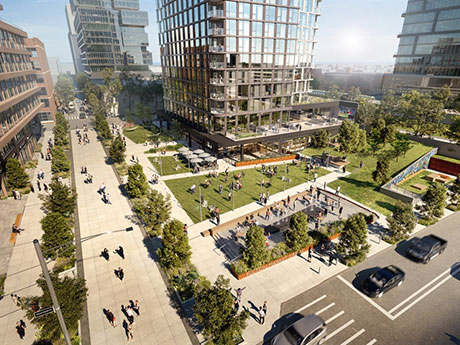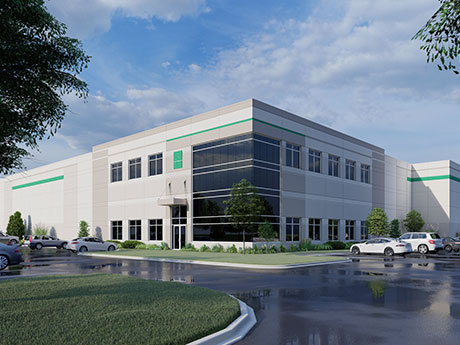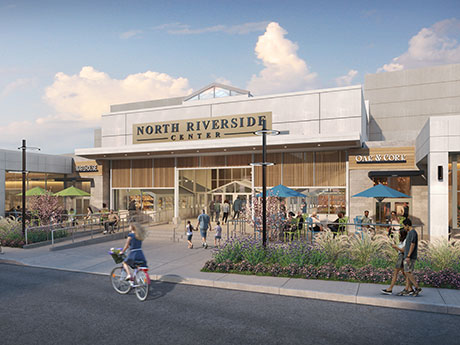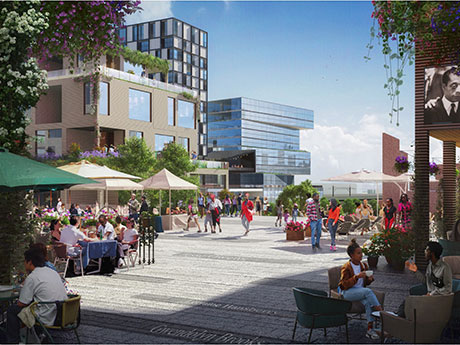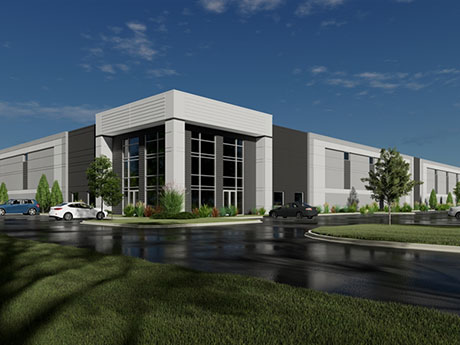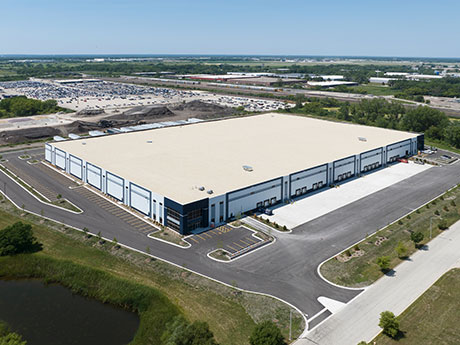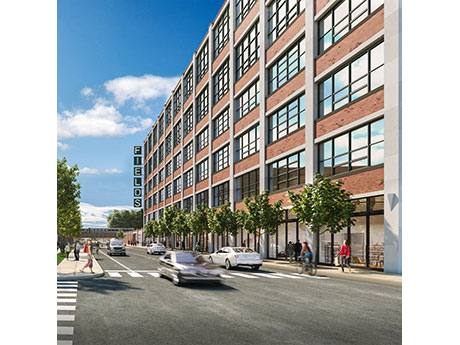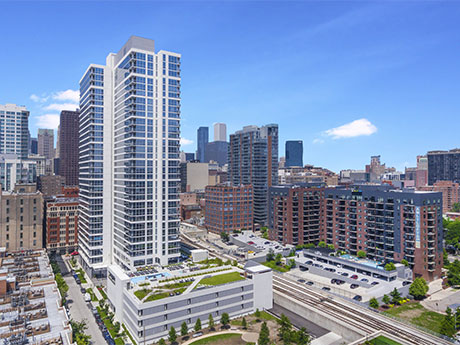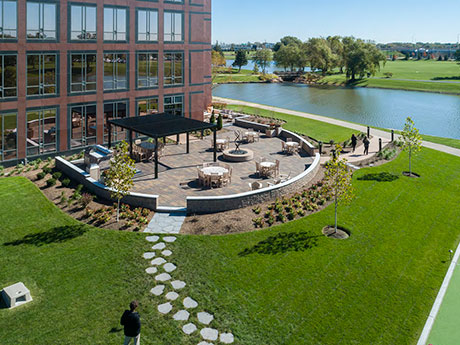By Dougal Jeppe, Colliers Over the past few years, we have been inundated with less than positive industry news. While it’s true we are at a historic moment in commercial real estate, and users are facing complex, never-before-seen questions about how to use their space, there remain many positives as we head toward the second half of 2024. So, let’s take a look at the good news from the Chicago office market. For now, downtown Chicago remains a tenant’s market, a trend expected to persist throughout 2024. With over 47.2 million square feet of office space available, tenants have a plethora of high-quality options to choose from, making it an opportune time for businesses seeking favorable lease terms to secure space. And companies are doing just that. There has been a recent uptick in large space renewals by long-term office tenants including some consolidations reflecting the commitments many Fortune 500 companies, such as Mesirow and PNC Bank, have made to the City of Chicago. Notably, JPMorgan Chase announced plans to reinvest in Chicago by renovating its namesake tower and keeping its 7,200 employees in the city. Similarly, Google has committed to the Central Loop, and plans to move about 1,000 …
Market Reports
By Noel Liston, Core Industrial Realty The 10 major submarkets that comprise the broader Chicagoland industrial market all performed at or above expectations in 2023. While absorption was not as robust as the pandemic boom that saw back-to-back record years, 2023 was a solid year for absorption and a strong year in rental growth throughout the broader market. Significant deliveries of speculative developments were offset with solid absorption by manufacturing, assembly and food & beverage-related industries that picked up the slack left from a less enthusiastic e-commerce market. Broadly speaking, the greater Chicagoland industrial market started 2024 with a vacancy rate of ±7.3 percent. This vacancy rate is up from the low 5 percent range the market averaged for the second half of 2023. Assuming equilibrium (a market that favors neither tenant nor landlord) for the market is historically a ±6 percent vacancy rate, the current vacancy rate can be deceiving. This is, in large part, due to the jump in vacancy as a result of the delivery of a significant amount of larger, speculative industrial developments in certain submarkets where land zoned for industrial with relatively good access to a major highway or interstate was still available. Further, …
By Brad Belden, Colliers Now that the final numbers are in for 2023, we can undoubtedly say that the worst of COVID is behind us in the world of retail leasing. 2023 saw increased rental rates, longer-term deals and record low vacancy rates across the nation. It’s great news; retail is not dead and it could even be argued that it’s never been busier. But it’s also… different. On average, leases are shrinking and how space is used is changing. And demand, coupled with customers’ increased desire to visit evolving concepts, is making for another busy year ahead for this segment of the industry. So far, 2024 is off to a great start and this year’s trends are already taking form. On the consumer side, a significant shift back to bricks-and-mortar retail is already underway as consumers seek to connect with retailers again and make shopping an “experience.” On the retailer side, two factors are driving change: the emergence of AI, which is allowing many retailers to analyze and customize the customer experience while improving operations behind the scenes to boost sales (regardless of the tenant type, retail tenants in Chicago and across the U.S. have one thing in common: …
By J. Byron Brazier Equitable development is a knotty concept. In theory, development equity sounds easy and essential. In practice, it’s not clearly defined and not easily sustainable — economically, socially or politically. Equitable development is generally seen as an approach that revitalizes and empowers disinvested communities by meeting residents’ wants and needs, diminishing disparities and spurring economic growth, ensuring residents benefit from such growth and creating conditions for people to live healthy and happy lives. That definition is accurate but incomplete. Equitable development has multiple meanings, some less intuitive than others. Chicago lawyer Danielle Meltzer Cassel says there are three ways to define development equity. The first is the one above, which is the direct model of equitable development. This model rectifies inequality through what development directly produces, such as affordable housing in areas where there’s little or no such housing, good jobs for people who are unemployed or underemployed, greater access to quality healthcare and education, and other resources that allow communities to thrive. There are two other definitions, the indirect model and what Cassel calls the procedural model of equitable development. The indirect model involves real estate developments that do not directly benefit disinvested communities, such as …
By Mike Mangan, Cresa We knew it would happen, it was just a matter of time: The industrial real estate market is currently experiencing a cooling trend in Chicago and across the country. The best-performing asset across all commercial asset classes for the past several years is finally coming back to earth due to higher borrowing costs and a slowdown in demand. Rental rates are beginning to level off and many economists are predicting a reduction in consumer spending. The industrial sector had been able to flourish despite economic headwinds, with demand during the pandemic heavily focused on e-commerce activity. The supply versus demand is shifting, and this should be welcome news to tenants in the market or who will be in the market in the next 12 to 24 months. Indicators are not pointing toward a crash landing, but a return to earth for the golden child of the commercial real estate asset classes. Tenants and occupiers will be able to utilize the additional supply coming to market to secure better economics and concessions. The facts Let’s first take a look at the national landscape. The U.S. unemployment rate in August was 3.8 percent — higher than predicted by …
By John Cassidy and Calvin Gunn, Lee & Associates If you love a good groundbreaking photo — full of shiny shovels, hard hats and smiling development teams — you may be disappointed this year, for all the best reasons. With Chicago’s most recent wave of speculative industrial projects currently being delivered, the market now actually has space to offer industrial tenants — a refreshing change from the past few years. With construction costs and interest rates continuing to rise and credit availability shrinking, many developers with ties to Chicago are pausing new projects as exit cap rates are becoming more difficult to predict. At the same time, market fundamentals are starting to cool from the pandemic-era eruption of demand. The good news: Chicago’s industrial market may be down from the clouds, but it’s still historically quite healthy. Vacancy rate in perspective According to Lee & Associates of Illinois’ second-quarter industrial snapshot, construction deliveries caused the Chicago industrial vacancy rate to tick upward for the second consecutive quarter. However, a 3.68 percent vacant market is still considered a historically low vacancy environment. As a comparison, that vacancy rate measured about 12 percent at the end of 2009 and 6.6 percent in …
By Jaime Bertsche and Lara Keene, Mid-America Real Estate Positive signs for retail real estate abound across many Chicago neighborhoods and high streets, with physical stores demonstrating their necessity coming out of the pandemic. Both of us live and work in the city of Chicago, so it’s particularly heartening to see favorable trends and leasing activity throughout our city of neighborhoods. It may surprise some to know that Chicago has been No. 1 in corporate expansions for the last nine years, with 441 major business expansions and relocations in 2021. Chicago employment has grown by 75,000 since the start of 2022 and ranks third in the U.S., according to World Business Chicago. Google is investing in the city and purchased the 17-story, 1.2 million-square-foot Thompson Center in the Loop with plans to use the building as a second Chicago headquarters. Kellogg announced it will move a spinoff company to Chicago for a new headquarters in the city. Some of the economic changes we saw in the market in the second half of last year affected retailers’ expansion plans. Inflation and interest rates challenged retailers to maintain their customer base, keep their own costs in line, and adapt to higher …
By Mark Stern, JLL Chicago’s multifamily sector currently enjoys strong market fundamentals highlighted by healthy occupancy rates and continued rental rate growth. The current core apartment rents average over $4 per square foot, which is higher than previous peak pricing. After the pandemic, rental rates between late 2021 to 2022 recorded 10 to 15 percent growth, which is substantially ahead of the historical norms. Currently, the Chicago rental market is experiencing more stable rent growth in the 3 to 4 percent range. Chicago remains one of the most affordable major markets to rent an apartment when looking at the current average effective rents as a percentage of median household income. This affordability will allow owners to continue to push rental rates in the future. One of the major factors leading to strong operating fundamentals in the Chicago market is the lack of new supply. The supply in Chicago is currently 1 percent of the inventory, which is quite low in comparison to other markets where there could be as much as 10 to 12 percent of the inventory under construction. In the city, there are just over 7,000 units under construction slated for delivery between 2023 and 2024. The majority …
By Mark Kolar, Cresa There’s been a lot of news recently about the financial pressures facing suburban Chicago commercial office landlords who have financed their office buildings via commercial mortgage-backed securities (CMBS) loans. While the financial challenges these buildings face continue to grab the headlines, there is a much less visible yet greater amount of privately funded commercial office landlords that could be facing dire financial changes over the next couple of years. These privately funded loans that originated through major banks and insurance companies are seeing just as much, if not more, stress than their CMBS counterparts. Collectively we’re seeing significant systemic issues for all Chicago commercial office landlords with no clear path to a solution in sight. In suburban Chicago, about 13 percent of commercial office loans are financed by CMBS loans with the majority of loan debt financed through local financial institutions, private investment funds and insurance companies. While details on these loans is not as readily available as their CMBS counterparts, many office landlords are confronting similar challenges. Both CMBS and privately funded commercial landlords and their lenders are facing a host of capital challenges that revolve around systemic changes in leasing activity, increasing costs of …
By Tyler Ziebel, Colliers Following one of the most active and aggressive periods in Chicago’s industrial capital markets history, 2022 ended as a year most market participants would rather forget. As the buying community returned to their desks and fastened their seatbelts for another year of fun in 2023, industrial sales brokers across the country are starting the year posed with a question from investors that hasn’t been asked in some time: “What are we going to be able to buy this year?” It’s easy to assume that investors will remain content to sit out of the turbulent market, but the answer to where we are, and aren’t, seeing liquidity requires a nuanced answer. In order to do that, we must take a quick look at 2022 and what set this uncertain market in motion. After several record-setting years for industrial leasing and sales in 2020 and 2021, accelerated by the COVID pandemic and a historically low interest rate environment, 2022 opened with the same frenzied pace and enthusiasm of 2021. But as the Federal Reserve pivoted its focus from keeping the economy stable to taming the resulting inflation, rapidly rising interest rates grounded institutional industrial transactions and development deals …


